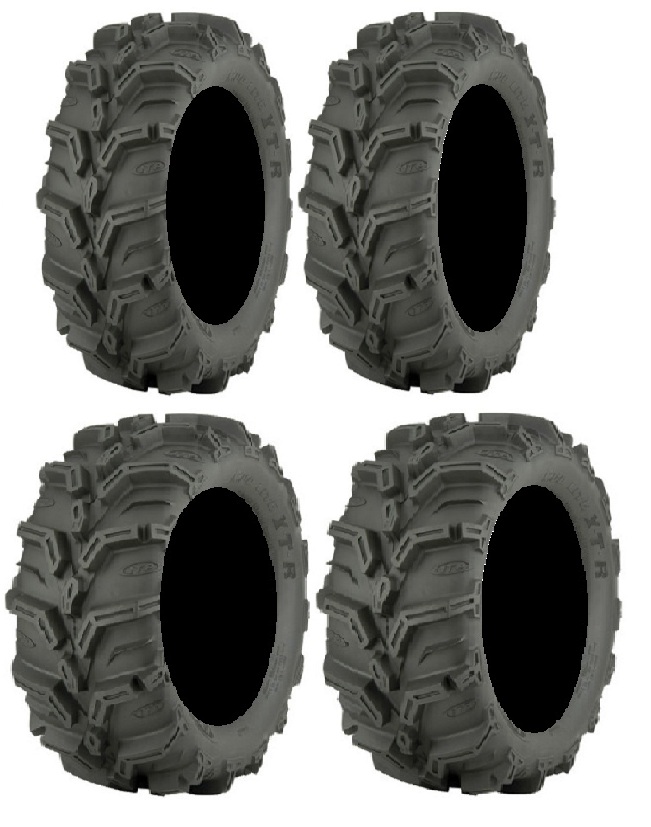Your quad is a do-anything machine. ATV’s are great for getting things done and for recreation too. But now you’re looking at your tires. Maybe you’ve blown one or they’re getting bald. Or maybe you just want a more aggressive tread pattern and a bigger tire. The problem is you’re a little lost when it comes to your ATV tire size.
How big can you go? Should you go big? How do you even know what all these numbers represent?
Don’t worry, we’ve got you covered. We’ll answer all those answers and more in this comprehensive guide.
How Do You Read ATV Tire Sizes?So, you’re shopping around for tires and you see one listed with a size like 26×10-12. Or, worse yet, you find something listed like 206/80R12.
What the heck does all that mean?
First, you need to figure out if you’re dealing with standard or metric ATV tire sizes.
ATV Tire Sizes: Standard Tire Sizing ChartStandard format is much more common on ATV tires than metric. You might see a tire size written 26×10-12 or, occasionally, 26x10x12. This format is pretty straightforward. It uses three numbers to sum up the size:
If you see a tire size that looks like this: 205/80R12, you know you’re dealing with metric. The metric format is exceedingly rare for ATVs and odds are you’ll never come across it. But if you do, the letter thrown in the middle of those numbers is a dead giveaway. In metric, you always have three numbers and a letter:
There may be other numbers and letters before and after these, but they’re not important for understanding your ATV tire size.
Breaking Down ATV Tire Sizes by the NumbersKnowing how to read those tire sizes is just the first step.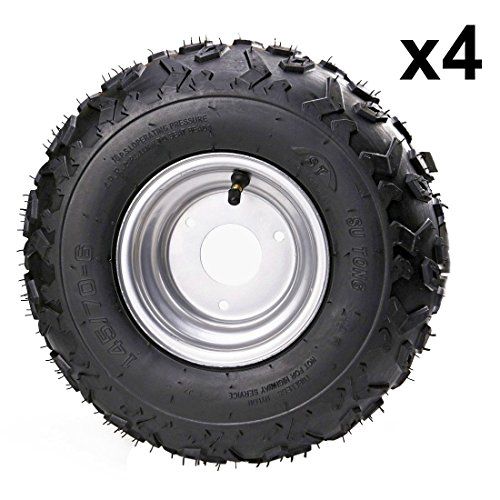 You really need to know how to use them. Is 26 inches a reasonable diameter for your quad? What kind of width do you need?
You really need to know how to use them. Is 26 inches a reasonable diameter for your quad? What kind of width do you need?
When you’re considering replacing all of your tires, you’ll want to make sure you get something that will actually fit on your stock vehicle.
Your typical ATV tire diameter fits within a range of about 20 inches for the smallest machines to about 30 inches for your more factory mud-equipped machines.
Basically, your quad will typically fit into one of few categories:
Keep in mind that you’ll want to keep within a couple inches of your stock tire size. If you go too big, you’ll start to rub on your fenders (among other issues). If you go small—well, that’s just silly.
Tire width is easier to understand. Choosing the right tire width has a lot to do with your own preferences and riding style.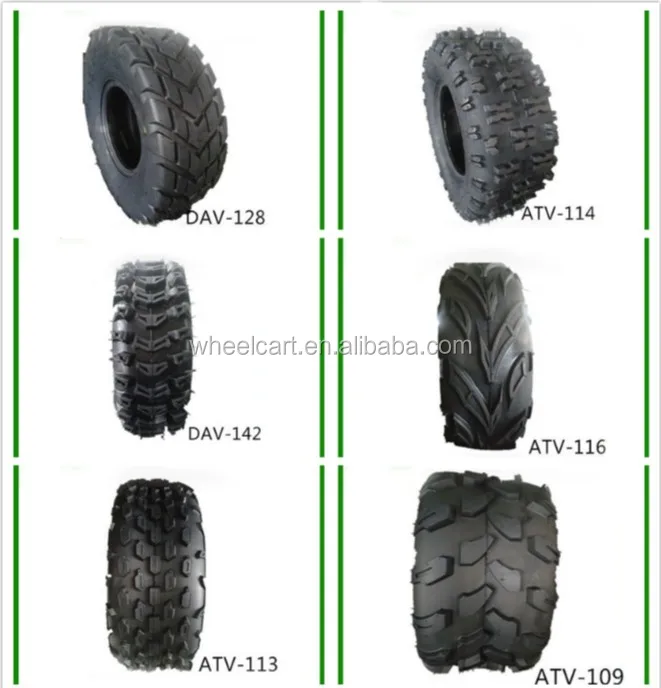
A wider tire tends to give you a flatter tread pattern and more grip. A narrow tire gives you a little more control.
ATV’s usually have a wider tire on the rear than on the front to get the best of both tires. A typical rear tire on a quad will be 10 to 11 inches wide while a front tire will be 7 to 8 inches wide.
But matching your tire width to your riding style isn’t the only thing you need to consider. You also need to make sure it’ll physically fit on your chosen wheel. There are two main ways to make sure it’ll fit.
This one is non-negotiable. You have to make sure your tire’s wheel diameter matches your actual wheel diameter.
You have to make sure your tire’s wheel diameter matches your actual wheel diameter.
Most off-road wheels tend to be 10 to 12 inches in diameter—which is convenient considering most off-road tires are designed to fit those wheels. That’s a good size as it gives your tire plenty of cushion between the tread and rim, which results in smoother rides and more protection for your rims.
Of course, you can end up with bigger wheels if you have bigger tires, but we’re getting ahead of ourselves.
Choosing the Right Size Tires for Your ATVYou don’t need any old tire. You have to choose the perfect ATV tire size for you. After all, you ride your own way and have your own needs.
We’re going to simplify ride style to three main types:
For a workhorse ATV, it’s not a bad idea to stick with stock. It’ll give you the expected traction and power you need.
Trail riding, like dune riding, means you want to go fast.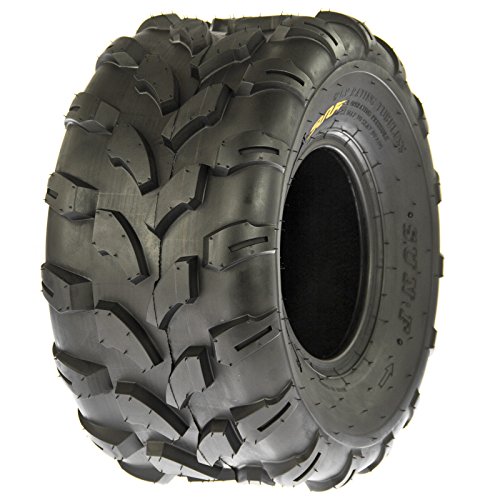 For that, a wider, flatter tire will keep you gripping and in control. If you ride in the mud, you might want to go with something bigger and narrower along with an aggressive tread pattern.
For that, a wider, flatter tire will keep you gripping and in control. If you ride in the mud, you might want to go with something bigger and narrower along with an aggressive tread pattern.Trails and dunes demand high traction, and you get that by going wider. You don’t necessarily need a taller tire, but a wider one will give you the grip you need.
Dominating rock gardens and taking on bounty holes is done best with a big tire. But going big isn’t as simple as just buying the biggest tire you see.
Can I Put Bigger Tires on My ATV?The short answer is yes.
Here comes the long answer.
Every ATV has a theoretical maximum tire size it can fit without modifying the suspension. It’s typically about one to two inches bigger than your stock tires. So if your ATV came with a 27-inch tire, you could probably fit a 29-inch tire without too much trouble.
But what if you want to go bigger?
That takes some work. You’ll either need to invest in a lift kit or some offset A-arms.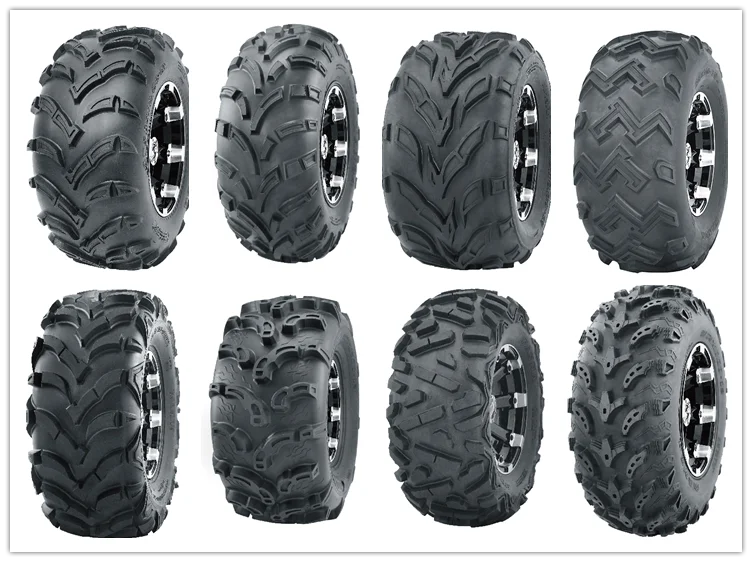 These types of kits will often tell you what the max tire size is when you have them installed.
These types of kits will often tell you what the max tire size is when you have them installed.
You can’t go big without some consequences though. Namely, you’ll lose torque due to the increased diameter (big tires like a high-gear kit!) and the extra weight. The weight can also put extra strain on your clutch and shorten the life of your clutch belt.
Luckily, you can get your torque back with a transmission gear reduction or GDP Portal Gear Lift (which has a gear reduction built in).
You can also bolster your clutch with heavy-duty drive belts and eek out even more torque with a clutch kit.
So now that you’re equipped with knowledge, go equip yourself with some tires. Get the ATV tire size you want, and ride with confidence.
RELATED CONTENT: ATVs38 tires15
Share
10
ATV tire explaination: ATV tires are listed in a set of three numbers, generally separated by dashes (25-10-12), or by an ‘x’ (25x10x12) or a combination of the two: 1st Number = The overall tire height when inflated (Ex.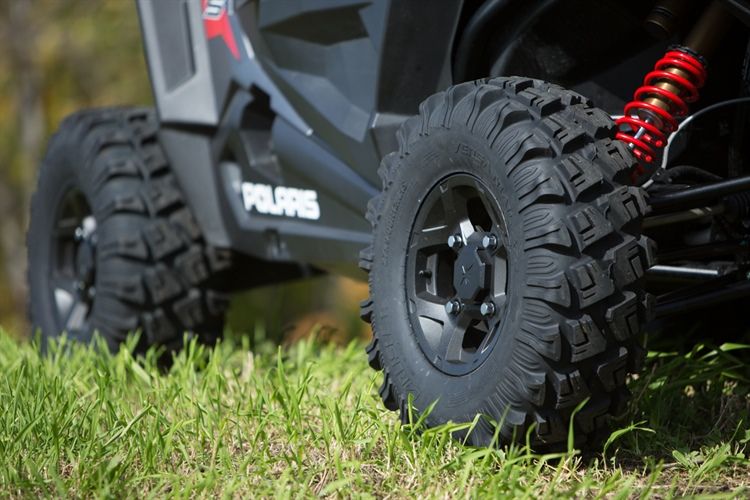 3rd Number = The rim or wheel diameter (Ex. 25×10-12 is 12″ in diameter).
3rd Number = The rim or wheel diameter (Ex. 25×10-12 is 12″ in diameter).
All ATV Tire sizes consist of 3 sets of numbers generally separated by dashes (ex. 25-8-12), forward slashes (ex. 25/8/12), or with an x (ex. 25x8x12). 1st Number = The overall height of the tire. (ex. 25×8-12 tire is 25″ tall.)
What do the numbers mean for an ATV tire size? Understanding ATV tire sizes. Inch size is the most widely used measurement in ATV tires. In the size 25 8.00-12, the meaning of the numbers is as follows: 25 – The overall height of the tire when mounted and inflated. 8.00 – The overall width of the tire when mounted and inflated. 12 – The diameter of the wheel this tire will mount to.
How do you size an ATV tire? Shown here is an example of ATV tire sizing. All ATV Tire sizes consist of 3 sets of numbers generally separated by dashes (ex. 25-8-12), forward slashes (ex. 25/8/12), or with an x (ex. 25x8x12). 1st Number = The overall height of the tire. (ex. 25×8-12 tire is 25″ tall.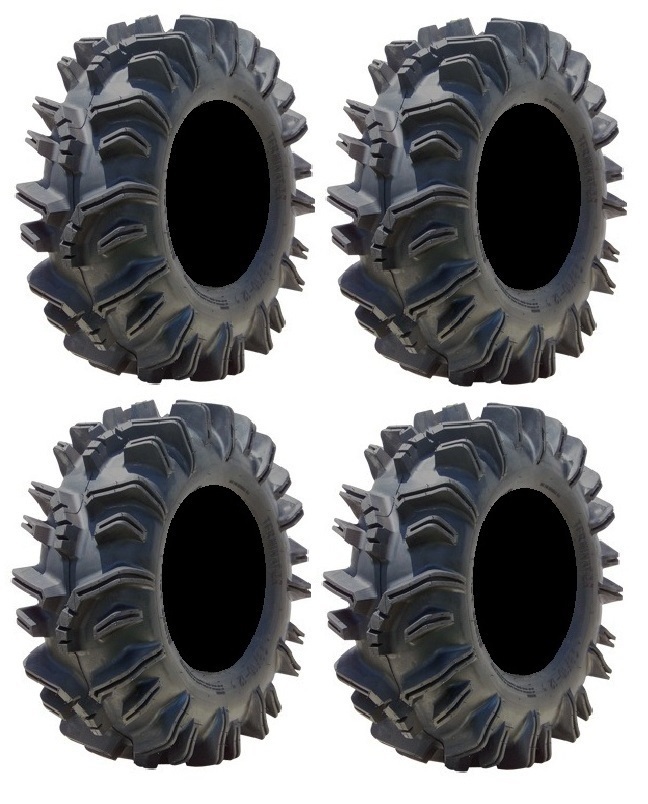 ) 2nd Number = The overall width of the tire. 3rd Number = The rim diameter.
) 2nd Number = The overall width of the tire. 3rd Number = The rim diameter.
What does the are mean on an ATV tire? This tells you the diameter of the rim for the tire on your ATV. In the example, “26X10-12,” the rim size is 12. Some numbers on ATV tires will have an “R” between the second and third number. The “R” simply means radial construction.
What is the width of an ATV tire? Notice the second number in the series of three. This number corresponds to the width of the tire or how fat the tire measures. In our example, “26X10-12,” the width of the ATV tire is 10 inches. Find the third number.
Table of Contents
355/40R22 tires have a diameter of 33.2″, a section width of 14.0″, and a wheel diameter of 22″. The circumference is 104.2″ and they have 608 revolutions per mile. Generally they are approved to be mounted on 12-14″ wide wheels.
Tire Width Is the width of the tire measured in millimeters from sidewall to sidewall. The first three-digit number in the tire size refers to the tire width. For instance, in a size P215/65 R15 tire, the width is 215 millimeters.
The first three-digit number in the tire size refers to the tire width. For instance, in a size P215/65 R15 tire, the width is 215 millimeters.
33″ Tires (+/- 0.50″ in overall diameter)
—————————————–
15″
33X950-15
33X10.50-15
33X11.50-15
Metric Standard
——— ———–
375/50/18 33.0″x 15.4
325/60/18 33.2″x 13.3
325/65/18 34.8″x 13.5
305/70/18 35.0″x 12.2
33-inch tires work well with rims that measure 15 or 16 inches in width, while 35-inch tires should only be used with rims that are at least 17-inches wide.
The current tire on my quad is a 22x11x10. The smallest size these tires have is the 22x12x10. 22 = The overall height of the tire when mounted and inflated to recommended air pressure. In this example, the tire is 22 inches tall. 12 = The overall width of the tire when mounted and inflated to recommended air pressure.
25×11-12. The ATV tires within this category are all available in the selected size; 25×11-12. The numbers 25-11-12 represent the dimensions of the tire. The first number is the height, the second number is the width & the third number is the diameter of rim that it will fit on.
50-18 is a 305/60-18 metric size. Other close sizes are 325/60-18 (33×13. 00) and 305/65-18 (34×12.
This number indicates that your tire has a width of 265 millimeters. 70. This number means that your tire has an aspect ratio of 70%. In other words, your tire’s sidewall height (from the edge of the rim to the tire’s tread) is 70% of the width.
Rim Size P-Metric Size
——— ————-
16 Inch 285/75R16
305/70R16 32.8 inches
315/75R16 34.6 inches
345/75R16 36.4 inches
B: TIRE WIDTH The three-digit number following the letter is the tire’s width (from side to side, looking at the tire head on) in millimeters. It’s the height of the sidewall measured from wheel rim to top of the tread, expressed as a percentage of tire width. In other words, it’s sidewall height divided by tire width.
It’s the height of the sidewall measured from wheel rim to top of the tread, expressed as a percentage of tire width. In other words, it’s sidewall height divided by tire width.
A 305/70/16 is a 32.8 (~33) by 12.00 inch tire.
Obviously, you will need a certain kind of tire depending on how you use your vehicle. Due to this, a 235 tire might not be better than a 225 tire, or vice versa, but depending on your situation, one tire might serve you better than the other.
This number indicates that your tire has a width of 265 millimeters. 70. This number means that your tire has an aspect ratio of 70%. In other words, your tire’s sidewall height (from the edge of the rim to the tire’s tread) is 70% of the width. In this case, the sidewall height works out to be 185 millimeters.
345/25R20 tires have a diameter of 26.8″, a section width of 13. 6″, and a wheel diameter of 20″. The circumference is 84.1″ and they have 753 revolutions per mile. Generally they are approved to be mounted on 12-13″ wide wheels.
6″, and a wheel diameter of 20″. The circumference is 84.1″ and they have 753 revolutions per mile. Generally they are approved to be mounted on 12-13″ wide wheels.
ATV tire explaination: ATV tires are listed in a set of three numbers, generally separated by dashes (25-10-12), or by an ‘x’ (25x10x12) or a combination of the two: 1st Number = The overall tire height when inflated (Ex. 3rd Number = The rim or wheel diameter (Ex. 25×10-12 is 12″ in diameter).
The first number is your overall diameter of the tire. In this example the tire diameter or “height” is 33 inches tall. The second number represents the width of the tire. In example “A” this reads 12.50, meaning the tire width is 12 and 1/2 inches.
ATV tire explaination: ATV tires are listed in a set of three numbers, generally separated by dashes (25-10-12), or by an ‘x’ (25x10x12) or a combination of the two: 1st Number = The overall tire height when inflated (Ex.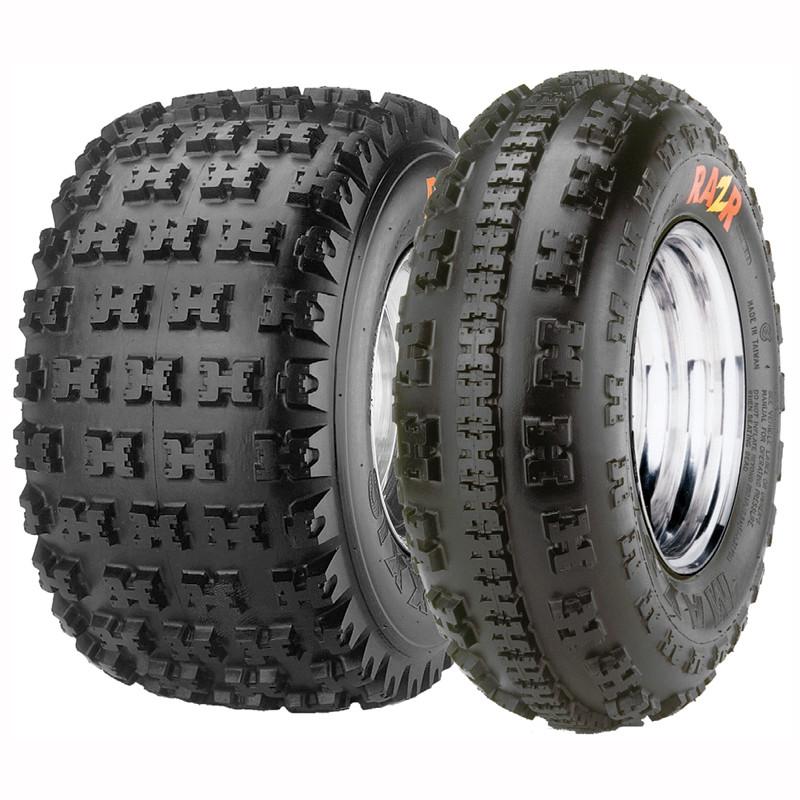 25×10-12 is 25″ tall). 3rd Number = The rim or wheel diameter (Ex. 25×10-12 is 12″ in diameter).
25×10-12 is 25″ tall). 3rd Number = The rim or wheel diameter (Ex. 25×10-12 is 12″ in diameter).
– 1st Number = The overall height of the tire. (ex. 25×8-12 tire is 25″ tall.)
– 2nd Number = The overall width of the tire. ( ex. 25×8-12 tire is 8″ wide)
– 3rd Number = The rim diameter. ( ex. 25×8-12 tires are designed to mount on a 12″ rim)
Rim Size P-Metric Size
——— ————-
16 Inch 285/75R16
305/70R16 12.2 inches
315/75R16 12.3 inches
345/75R16 13.6 inches
05/17/2018
The numbers written on the side of the rubber tire can tell the owner of the ATV everything that interests him. And if you are for some If you don't know what these mysterious numbers mean, then you can be mistaken when choosing the next set of tires. But tires directly determine whether it will go technique further or not. So, in this article you will close all the questions on about the decoding of size ATV tire .
So, in this article you will close all the questions on about the decoding of size ATV tire .
All tires have their own basic parameters - this is the width, height and diameter. The value of these parameters is mainly measured in inches. Exists two units:
1) If you have ATV, then this is for you. English version is the most common number system that is used when determination of tire dimensions on ATVs. All measurements here are in inches. (1 inch equals 2.54 cm). For example, the size indicated in English classification looks like this - 25x8x12 . Let's take a closer look at the meaning of each digit:
- The first digit 25 shows the height of the tire in inches;
- The second digit 8 indicates the width of the tire in inches;
- The last, third digit 12 indicates the diameter of the wheel disk, it is also measured in inches. Disc diameter on each ATV can be different.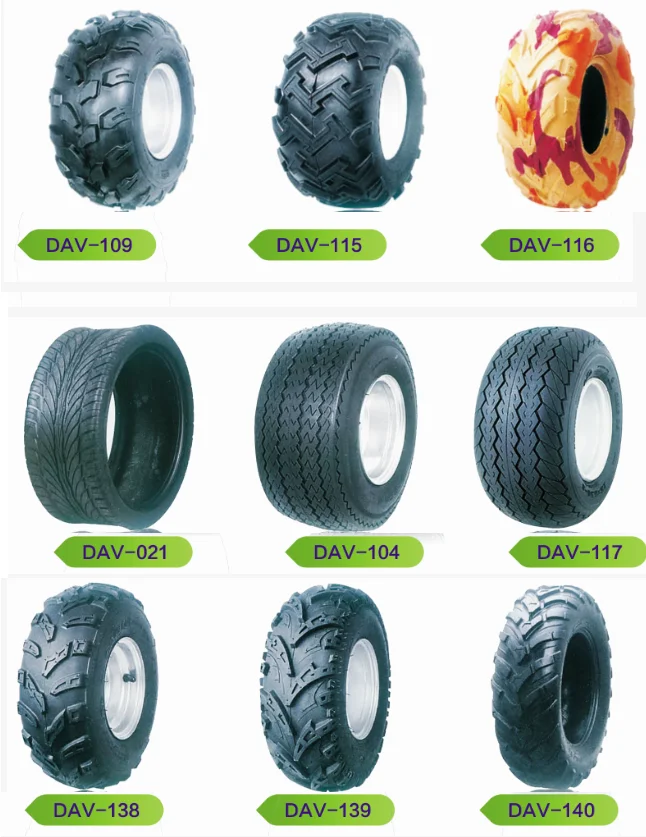 Therefore, be careful before you buy tires for ATV, see what regular disks are installed on your vehicle.
Therefore, be careful before you buy tires for ATV, see what regular disks are installed on your vehicle.
And a very important point worth noting. Often our customers ask themselves: “If I have a tire size of 20x10x10, can I put instead of them 20x11x10? The answer is yes. First, you can put rubber on regular wheels with a size exceeding 1 inch in height and width. Secondly, if you want tires even wider, then for this you will need to buy other disks. But again, there are limitations. On discs of other diameters, you can install rubber, the largest is only 2 inches in height and width.
These two rules must be strictly observed, otherwise, if you try to put tires of an unacceptably large size, this may adversely affect on a quad bike. After all, the rubber will be larger and, accordingly, heavier, which does not fit the technical parameters of the ATV. In production ATVs take into account all the characteristics, so manufacturers of ATV equipment I don't recommend using bigger tires at all.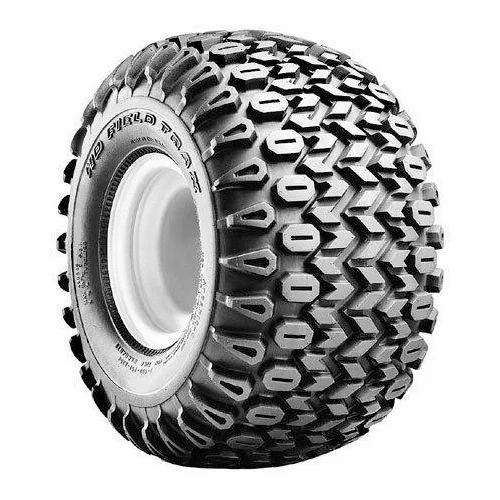 But if you do decided to increase the size of tires, call our toll-free number, we we will help.
But if you do decided to increase the size of tires, call our toll-free number, we we will help.
2) Also there is another version - metric . Here the dimensions are indicated in percentage and millimeters. For example, size specified according to the metric classification - 205/80 Rx12 . Such designations are usually used on automobile tires. Let's see what's what:
- The first digit of 205 shows the total tire width in millimeters. Converting this value to inches, we will just get the number 8 (in the English version is 8 inches wide).
- The second digit 80 indicates the ratio of the height of the tire to its width, measured as a percentage. After doing some mathematical manipulations, we get the number 25 (in the English version, the height is equal to 25 inches).
- The number 12, as in the English version, shows the size disk in inches.
- Well, the letter R means that our tire is radial.
The most important thing to remember from the article is that it is not recommended to install tires of huge sizes that do not correspond to the parameters your ATV . If you want to change the tires on your vehicle, give us a call. we will help.
If you want to change the tires on your vehicle, give us a call. we will help.
A four-wheeler is an SUV by definition, which means that tires for a ATV are the most important part that ensures its flotation. Going to conquer the next track, you must be confident in your four-wheeler.
Whether racing or riding a quad over rough terrain, you can count on a safe and comfortable ride. Experienced riders know that only high-quality ATV tires can provide maximum comfort and safe handling of this exciting vehicle.
Considering the fact that the ATV was originally destined to conquer the off-road, manufacturers shoe SUVs in tires that provide confident driving on hard dirt roads. Naturally, a car on such wheels can also zip along the highway, although driving on public roads for most models is prohibited by traffic rules.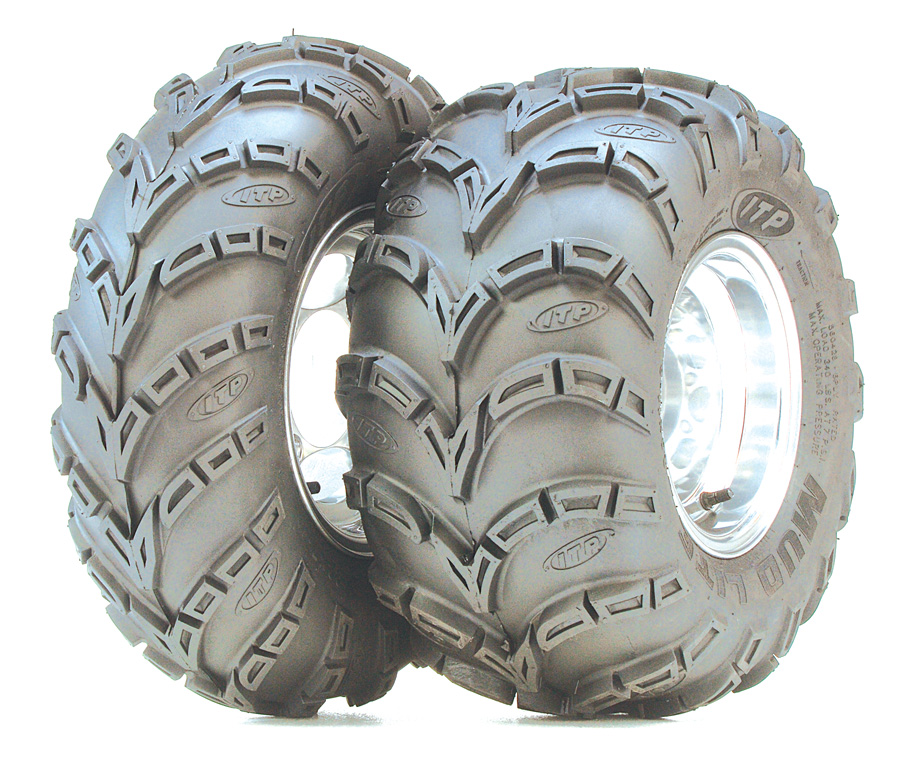
Even if you are not a professional athlete, you are unlikely to resist the temptation to conquer the viscous wetlands, or test the ATV on the flotation of liquid mud to evaluate its ability to overcome impassable areas. After all, that's what you bought the SUV for. Is not it? And if so, then it is clear that ordinary quad tires are of little use for sorties into the area, replete with deep puddles filled with viscous mud. It's time to think about equipping your ATV with real mud tires.
Real mud tires, unlike standard tires, have larger lugs that can bite into loose soil or sand. The tread, in the form of a discharged Christmas tree, resembles a pattern on tractor wheels. The diameter of such tires is increased and, depending on the model, ranges from 25 to 34 inches.
The most popular ATV tires are between 26 and 28 inches as they fit most ATVs without any suspension modifications. The width of the cross-country tires is slightly larger than the standard tires, and the width of the front and rear tires is different. This allows the front tires to follow their own path, while the rear tires follow a slightly different path, gripping the curb and allowing you to go a lot further.
The width of the cross-country tires is slightly larger than the standard tires, and the width of the front and rear tires is different. This allows the front tires to follow their own path, while the rear tires follow a slightly different path, gripping the curb and allowing you to go a lot further.
Under normal operating conditions, the main parameter that affects the stability and handling of the ATV is the crown - the tread area in contact with the road surface. The larger the contact patch, the better the handling on firm ground. Therefore, if you are a fan of high speeds, like to maneuver and ride on rough terrain full of hard dirt roads, forest rolled roads, as well as any other hard ground, choose tires with a radial cord construction (example 1, example 2, example 3). Also, the radial design of the cord very well fulfills the bumps that can get in your way, a protruding tree root, stone or something else, the radial design will allow you to overcome this bump in the most comfortable way!
Also, the radial design of the cord very well fulfills the bumps that can get in your way, a protruding tree root, stone or something else, the radial design will allow you to overcome this bump in the most comfortable way!
ATV wheels require softer, lighter rubber for maximum road contact and traction to confidently tackle swampy terrain. Cross-country ability is enhanced by a special tire design. An important role belongs to the lamellas, which have a peculiar shape and optimal height. The ability of the lugs to self-clean is very important, since the adhering dirt greatly complicates the patency on loose soils. Sidewall strength is also important for mud tires. Passing elastic wheels on deep ruts is associated with the risk of damage. The presence of strong sidewalls minimizes such risks.
The diameter of the tires affects the ground clearance of the all-terrain vehicle, the increase of which increases its cross-country ability. The width of the tire changes the area of its contact with the road. Wider profiles sink less into soft and loose surfaces, helping you to move confidently through the mud.
Wider profiles sink less into soft and loose surfaces, helping you to move confidently through the mud.
When choosing tires for an ATV, you should proceed from the expected conditions of its operation. Ideally, tires should provide comfortable driving, both on hard dirt roads and in mud. However, in practice it is impossible to achieve such results. Different manufacturers solve this difficult problem in their own way. In principle, all solutions come down to the creation of rubber optimized for use on a certain type of road: solid dirt tracks, or loose soils, mud, sand, grass. There are also all-purpose tires that provide average performance on different surfaces.
|
|
| DAKAR 2016. SERGEY KARYAKIN IN THE QUAD CATEGORY. |
The well-known American manufacturer ITP has succeeded in creating the perfect tire.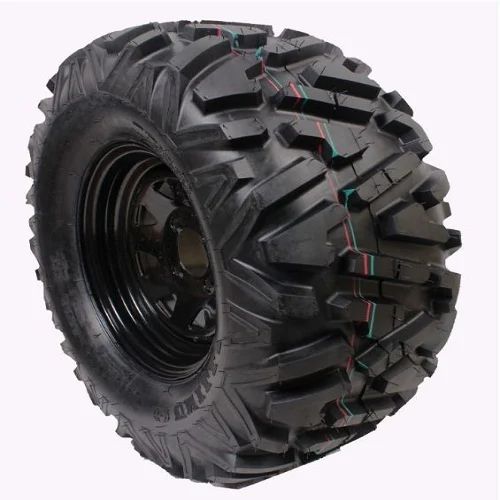 It is by far the #1 tire and rim brand in its class. ITP products are known and bought by professional riders and extreme sports enthusiasts all over the world. Our well-known compatriot driver Sergey Karyakin participated in the Paris-Dakar race on tires with ITP rims. The ITP range includes the following tire types:
It is by far the #1 tire and rim brand in its class. ITP products are known and bought by professional riders and extreme sports enthusiasts all over the world. Our well-known compatriot driver Sergey Karyakin participated in the Paris-Dakar race on tires with ITP rims. The ITP range includes the following tire types:
ITP tires are produced exclusively in the USA, which is an additional guarantee of their high quality.
The softness of ITP tires is superior to all known brands. But this indicator is very important for off-road driving. In an effort to find the best properties for different roads, ITP tire developers create tires for all conditions of use, creating new and unique treads that can cope with their tasks on any type of surface.
The main advantages of ITP tires include:
Just to add, ITP also makes excellent rims for the ATV in various sizes, including beadlock and reversible beadlocks.